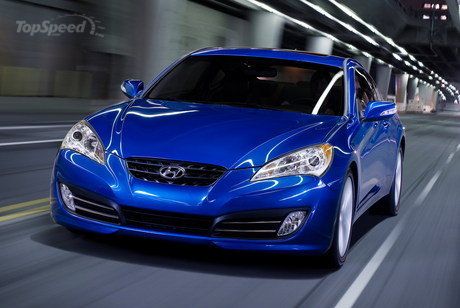The four also has much lower first and second gears in Reasons are many: Much of the V6's extra 100 pounds is carried on the nose, which tends to overwhelm the front tires. While the Genesis Coupe 3.8 V6 is notably quicker at the drag strip, the turbo four is the more enjoyable version of the car. ("Hoon" is an Australian or New Zealand word translates to anti-social behavior and driving irresponsibly.) The Genesis Coupe is also available with a 306-horsepower 3.8-liter V6.
Not to mention, a rear-wheel-drive car can do things no stock front-drive car can do: drifting powerslides and hooning, smoky burnouts. The bottom line: A rear-drive car will always beat an otherwise identical front-driver around a dry racetrack or up a mountain road. With a rear-drive car, the rear tires concentrate on putting power to the ground, while the fronts focus on turning and/or slowing down. This means a front-driver has more difficulty simultaneously accelerating and turning (or turning and braking).
And, if you haven't heard, additional weight is not "road hugging.") With a front-drive car, the front tires must do all of the acceleration and steering and about 80 percent of the braking, while the rear tires' main job is to keep the gas tank from dragging on the pavement. The main purpose of front-wheel-drive, contrary to popular misconception, is to increase interior room. of torque at just 2,000 rpm. The standard engine is a 210-horsepower, turbocharged, four-cylinder that makes 230 lb.-ft,the 2010 Hyundai Genesis Coupe 2.0T is like a rear-wheel-drive racecar-quick, responsive and fast.
Not to mention, a rear-wheel-drive car can do things no stock front-drive car can do: drifting powerslides and hooning, smoky burnouts. The bottom line: A rear-drive car will always beat an otherwise identical front-driver around a dry racetrack or up a mountain road. With a rear-drive car, the rear tires concentrate on putting power to the ground, while the fronts focus on turning and/or slowing down. This means a front-driver has more difficulty simultaneously accelerating and turning (or turning and braking).
And, if you haven't heard, additional weight is not "road hugging.") With a front-drive car, the front tires must do all of the acceleration and steering and about 80 percent of the braking, while the rear tires' main job is to keep the gas tank from dragging on the pavement. The main purpose of front-wheel-drive, contrary to popular misconception, is to increase interior room. of torque at just 2,000 rpm. The standard engine is a 210-horsepower, turbocharged, four-cylinder that makes 230 lb.-ft,the 2010 Hyundai Genesis Coupe 2.0T is like a rear-wheel-drive racecar-quick, responsive and fast.


